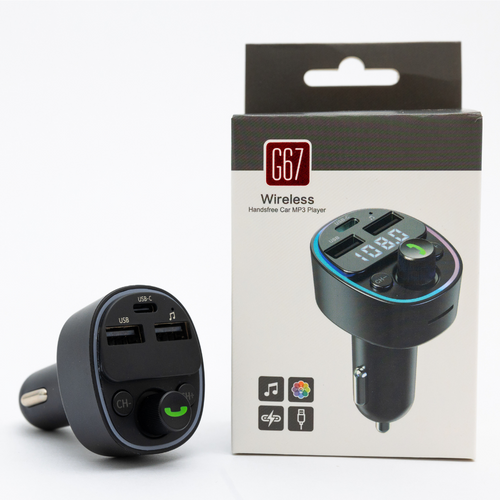Picture this: You're deep in the Australian outback, relying on your lithium-powered setup to keep your fridge running and devices charged.
Suddenly, your battery dies without warning.
The voltage read 12.8V just hours ago...
So what went wrong?
Welcome to the deceptive world of lithium battery State of Charge (SoC), where traditional assumptions about battery monitoring can leave you stranded.
Unlike the fuel gauge in your ute that gives you a reliable countdown to empty, lithium batteries play by entirely different rules—and understanding these rules could be the difference between a successful adventure and a costly rescue.
What Makes Lithium Batteries a Game-Changer?
Lithium technology has revolutionized how we think about portable power, but this revolution comes with a learning curve that many Australians are still navigating.
The appeal is undeniable.
Lithium batteries deliver three times the energy density of traditional lead-acid batteries, meaning you can power your camp setup with half the weight. They maintain consistent voltage output throughout most of their discharge cycle, unlike lead-acid batteries that gradually lose power as they drain.
But here's where it gets interesting—and potentially problematic.
That flat voltage curve that makes lithium batteries so efficient also makes them notoriously difficult to read.
While a lead-acid battery's voltage drops predictably as it discharges, giving you clear warning signs, a lithium battery might show 13.2V whether it's 70% charged or dangerously close to empty.
This characteristic has caught countless off-grid enthusiasts off guard, particularly those transitioning from lead-acid systems without adjusting their monitoring approach.
"I thought I had plenty of charge left... until everything shut off." - Off-grid camper in WA
The Critical Role of State of Charge in Battery Performance
Think of State of Charge as your battery's fuel gauge—except it's measuring electrons instead of petrol. But unlike your car's fuel gauge, which gives you a fairly reliable indication of how far you can travel, lithium battery SoC requires a more sophisticated understanding to interpret correctly.
Why accurate SoC matters more than you think:
Your battery's longevity depends heavily on how you manage its charge cycles.
Consistently draining a lithium battery below 20% can significantly reduce its lifespan, potentially turning a 10-year investment into a 3-year replacement cycle.
Conversely, keeping it constantly at 100% charge—while seemingly protective—can also accelerate degradation.
The sweet spot for lithium battery health typically sits between 20-80% SoC for regular use, with occasional full charges to recalibrate the Battery Management System (BMS).
This is where understanding your battery's true state of charge becomes not just convenient, but economically essential.
For Australian conditions—where extreme temperatures and remote locations make battery reliability critical—getting SoC measurement right isn't just about convenience, it's about safety and self-reliance.

Decoding the Lithium Battery State of Charge Chart
Here's where traditional battery wisdom falls apart. The relationship between voltage and charge in lithium batteries follows a dramatically different pattern than what most people expect.
The Reality Check: LiFePO4 Voltage vs State of Charge
| Voltage (12V System) | Approximate SoC | What This Means |
|---|---|---|
| 14.4V | 100% (charging) | Peak charging voltage |
| 13.6V | 100% (rested) | Fully charged at rest |
| 13.4V | 95% | Still essentially full |
| 13.2V | 70% | The deception begins |
| 13.0V | 40% | Danger zone approaching |
| 12.8V | 17% | Critical - immediate charging needed |
| 12.0V | 5% | BMS shutdown imminent |
The critical insight here is the massive SoC swing between 13.2V and 12.8V—that's a 53% charge difference across just 0.4 volts. This narrow voltage band is where most SoC estimation errors occur.
Why the 3.7V lithium battery specification confuses everyone:
When manufacturers specify a "3.7V lithium cell," they're referring to the nominal voltage—essentially the average voltage during discharge. This isn't the voltage when fully charged (4.2V) or nearly empty (3.0V).
It's the electrical equivalent of saying "Sydney's average temperature is 21°C"—true, but not particularly useful for deciding what to wear today.
This nominal voltage corresponds to roughly 40-50% SoC, meaning a cell reading 3.7V is actually half-empty, not full as many assume.
Advanced Methods for Calculating State of Charge
Voltage measurement, while common, is just one piece of the SoC puzzle. Modern battery management demands more sophisticated approaches.
Coulomb Counting: The Professional Standard
Think of coulomb counting as your battery's detailed financial statement—tracking every amp-hour that goes in and comes out. Unlike voltage measurement, which gives you a snapshot, coulomb counting provides a running tally of energy transactions.
Quality battery monitors using coulomb counting can achieve 1-2% accuracy under ideal conditions. However, they require periodic calibration—typically by allowing the battery to reach a known state (usually full charge) to reset any accumulated errors.

Temperature Compensation: The Australian Factor
Battery performance varies significantly with temperature, and Australian conditions can be extreme. A battery showing 13.0V at 45°C might read 13.3V at 15°C for the same SoC. Advanced monitoring systems compensate for these variations, providing more accurate readings regardless of conditions.
Smart BMS Integration: The Future is Here
Modern lithium batteries increasingly include sophisticated Battery Management Systems that combine multiple measurement techniques. These systems track:
- Individual cell voltages and balancing
- Current flow (both directions)
- Temperature across multiple points
- Historical performance data
- Predictive algorithms for remaining capacity
The result is SoC accuracy that approaches 95% reliability under real-world conditions.
Real-World Applications: Where Lithium State of Charge Matters Most
Off-Grid Solar Systems: Maximizing Your Investment
For the growing number of Australians installing home battery systems, understanding SoC is crucial for optimizing solar storage. A properly managed lithium battery bank should rarely drop below 20% SoC during normal operation, preserving battery life while ensuring backup power availability.
Consider this scenario: Your 10kWh lithium battery bank shows 12.9V (approximately 30% SoC). Without proper monitoring, you might assume you have plenty of power remaining. In reality, you're approaching the point where the BMS might begin reducing power output to protect the cells. Accurate SoC monitoring would have triggered earlier load management or backup generator startup.

Recreational Vehicle Systems: Freedom Through Knowledge
The caravan and motorhome industry has embraced lithium technology, but many users still apply lead-acid monitoring habits.
Unlike lead-acid batteries that provide clear voltage warnings before failing, lithium batteries can go from "apparently fine" to "completely dead" with minimal voltage change.
Experienced travelers now rely on comprehensive monitoring systems that track not just SoC, but also energy consumption patterns, charging efficiency, and projected runtime based on current loads.
Electric Vehicle Integration: The Connected Future
As Australia's electric vehicle adoption accelerates, understanding lithium SoC becomes increasingly relevant for home energy management.
Vehicle-to-grid technology allows EV batteries to supplement home power systems, but effective integration requires sophisticated SoC management across multiple battery systems.
Best Practices for Lithium Battery State of Charge Management
The 20-80 Rule with Australian Adaptations
While the 20-80% SoC range optimizes battery longevity, Australian conditions sometimes require flexibility.
During extreme weather events or extended off-grid periods, accepting occasional full discharge cycles may be necessary for safety—battery replacement costs pale compared to emergency situations.
Monitoring System Selection Criteria
Choose monitoring systems that provide:
- Real-time SoC with temperature compensation
- Historical data logging for pattern analysis
- Alarm systems for critical thresholds
- Integration capabilities with solar charge controllers
- Mobile app connectivity for remote monitoring
Calibration Routines That Actually Work
Monthly full charge cycles help recalibrate SoC calculations, but the key is consistency.
Establish a routine—perhaps the first weekend of each month—to fully charge your system and allow the BMS to rebalance cells.
This 15-minute investment can prevent hours of troubleshooting later.
Emergency Protocols for SoC Management
Develop clear protocols for different SoC scenarios:
- Above 50%: Normal operation
- 30-50%: Reduce non-essential loads
- 20-30%: Essential loads only, initiate charging
- Below 20%: Emergency shutdown procedures
Common Misconceptions About Lithium State of Charge
Myth: Higher voltage always means more charge
Reality: Voltage readings can be misleading immediately after charging or under load. Temperature, charging current, and battery age all affect voltage-to-SoC correlation.
Myth: Lithium batteries don't need regular maintenance
Reality: While lithium batteries require less maintenance than lead-acid, SoC monitoring and periodic calibration are essential for optimal performance and longevity.
Myth: All lithium batteries behave identically
Reality: Different lithium chemistries (LiFePO4, NMC, NCA) have distinct voltage curves and SoC characteristics. Generic monitoring approaches often fail across different battery types.
Future-Proofing Your Lithium Battery Investment
The lithium battery landscape continues evolving rapidly.
Emerging technologies like solid-state batteries and advanced BMS systems promise even more accurate SoC measurement.
However, the fundamental principles of proper monitoring and management remain constant.
Consider your current system's expandability.
Can additional monitoring be integrated?
Are firmware updates available for existing equipment?
Planning for future upgrades can extend your system's useful life and improve performance over time.
Troubleshooting Common SoC Issues
When SoC readings seem erratic:
First, verify all connections are clean and tight. Corroded terminals or loose connections can cause voltage drops that confuse monitoring systems. Check battery temperature—extreme heat or cold can temporarily affect readings.
Calibration drift over time:
If your SoC readings gradually become less accurate, the monitoring system likely needs recalibration. This typically involves a controlled full charge-discharge cycle while the system relearns the battery's characteristics.
BMS conflicts with external monitoring:
Some battery systems experience conflicts between internal BMS systems and external monitors. Consult manufacturer documentation for proper integration procedures, as incorrect setup can damage sensitive electronics.
The Economics of Proper SoC Management
Proper State of Charge management isn't just about battery performance—it's about protecting a significant investment.
A quality 100Ah lithium battery represents a $1,500-3,000 investment.
Poor SoC management can halve battery lifespan, effectively doubling your cost per year of service.
Consider the numbers: A well-managed lithium battery lasting 10 years costs roughly $200-300 annually. The same battery damaged by poor SoC practices might last 4-5 years, increasing annual costs to $400-600.
The cost of proper monitoring equipment—typically $200-500—pays for itself within the first year through extended battery life.
Taking Action: Your Next Steps
Understanding lithium State of Charge theory is valuable, but implementing effective management practices is where real benefits emerge.
Start with a comprehensive assessment of your current monitoring capabilities. Can you accurately determine your battery's SoC right now? If not, that's your first priority.
Invest in quality monitoring equipment appropriate for your application.
While basic voltage monitoring might suffice for simple setups, complex systems benefit from sophisticated coulomb-counting monitors with smartphone integration.
Most importantly, develop consistent monitoring habits.
The best equipment is worthless if you don't use it regularly.
Make SoC checking part of your routine—whether that's daily for critical applications or weekly for backup systems.
The transition to lithium battery technology represents a significant step forward in energy independence and efficiency.
However, realizing these benefits requires understanding and respecting the unique characteristics of lithium State of Charge management.
With proper knowledge and tools, your lithium battery investment will provide years of reliable, efficient power—whether you're exploring the Australian outback or simply seeking energy security at home.




